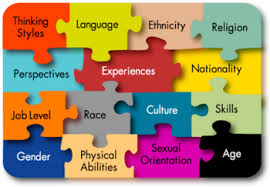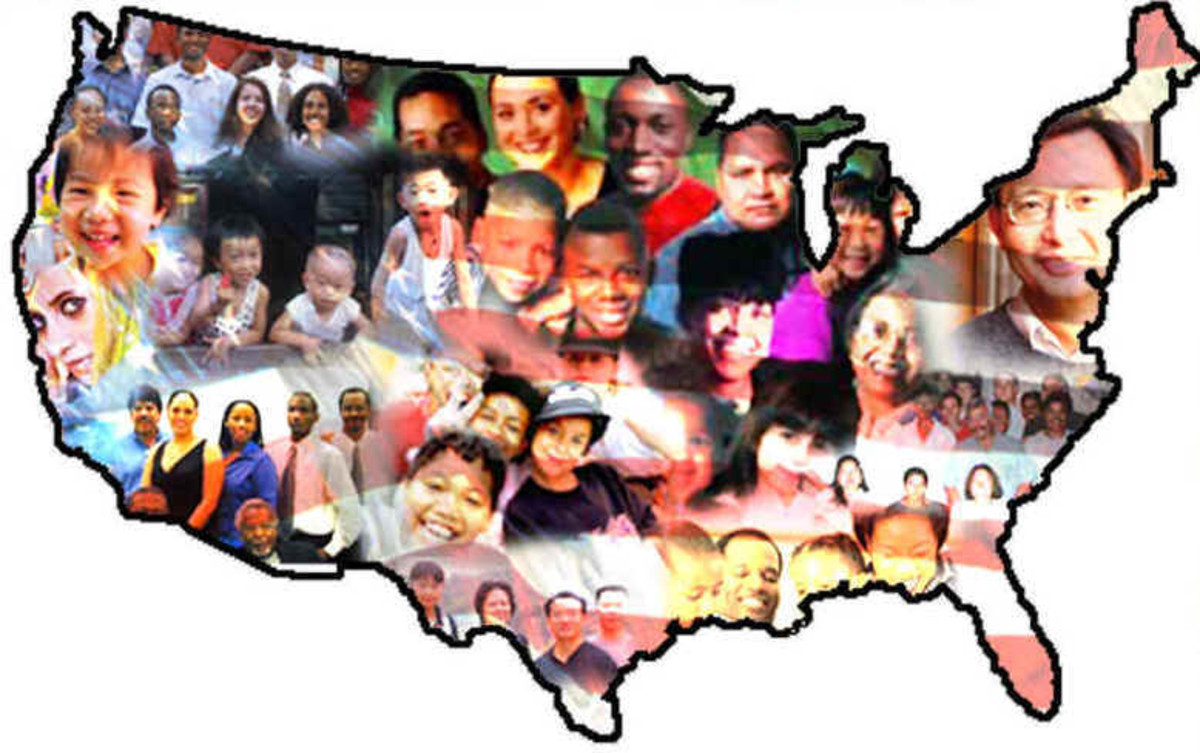Diversity: How To Be or Not to Be

Everyday our nation is encountering new obstacles, dead ends, and bridges. Some would say that there have been more roadblocks than bridges and in some ways they’re right. But in most cases when we encounter a roadblock our first instinct is to look for the nearest detour. Diversity has been a thorn in the side of our Country since the passing of the Civil rights Act of 1964, and well beyond. Though the civil rights movement was a catalyst for the rearranging of some ideologies, the call for diversity wasn’t cemented in the American ideal until the 90’s. So let’s put some things into perspective…

The Civil Rights Act was passed in 1964 making it 53 years old. The following are the average ages of some of the nation’s most powerful and influential officials.
University Presidents- 61
Corporate Executives- 52
Chief Executive Officers- 50
Supreme Court Justices- 69
Congress- 58
Senate- 62
Remember it wasn’t until the 1990’s that diversity was truly accepted as an ideal within the Country. This means that many of our nation’s top leaders and influencers grew up and were groomed in a time when division was a normal way of life. Now to be clear, I’m not insinuating that they are anti-diversity by choice or against it at all. What I am trying to get you to conceptualize is the impact that culture has on the shape of our ideologies.
Recently a senior software engineer at Google published a ten page manifesto that, in a nutshell, felt as if the company should not focus on diversity as a physical presence throughout its ranks, but it should target diversity in the ideological sense. In other words, he feels they should diversify the organization based on the different beliefs, values, and thoughts of its employees not gender or ethnicity…right! These suggestions were backed by several claims against women stating their inability to thoroughly perform at the standard of male counter parts. This belief that “ideological diversity” is true diversity is a partial truth and its being utilized to attempt to discredit the need for the most important aspect of diversity, inclusion. The beauty of “ideological diversity” is that, when embraced, its potential is limitless. On the other hand, if substituted as “absolute diversity” then you have primed yourself to fall right back into the place that made diversity a necessity.
The reason I say that inclusion is the most important aspect of diversity is because without inclusion you lose the true benefit of “ideological diversity”. Example, I have six Caucasian senior executives, a Caucasian deputy director, and a Caucasian CEO. They all have different beliefs and values, different backgrounds, religions, and areas of expertise; the epitome of “ideological diversity”! But there is one issue. Regardless of their beliefs, values, backgrounds, area of expertise they only know life from one perspective; as a Caucasian American male. Any attempt to understand life outside of that perspective, as genuine as it may be, can only be taken as merely an opinion. Inclusion offers the first person experience of life in whatever capacity and it serves as an accurate representation of what life is like being that ethnicity, that gender, that nationality, and believing whatever truth’s that are unique to that person. This is where diversity of thought can thrive. In this case, the thoughts and ideas account for factors that are only relevant to a specific group of people.

Back to the Google situation; kudos to Danielle Brown the vice president of Diversity at Google on the way she handled the situation. Using this situation I want to highlight some key areas to consider when approaching the topic of Diversity and Inclusion within your organization, whether you’re a leader or entry level it’s worth the consideration.
- Diversity apart from inclusion is fruitless. Like I stated previously, the glue of diversity is inclusion. Its likes having all the tools to fix a car, but only relying on duct tape. Inclusion creates an atmosphere that shifts from urging cultural competence to an outright acceptance/expectation of an all-inclusive workplace. Diversity is the ideology, inclusion is the practice.

- Create an environment conducive for dialogue. Understanding diversity also involves the beliefs and values of that diverse set of individuals and with that you’re bound to encounter some differences. The challenge is how we address those differences. This is what America has a major issue with. Our differences in opinions and beliefs are heavily dependent on our cultural background. By educating ourselves and discussing these differences we can began to enlighten each other on topics that many be deemed taboo.
- Do not attempt to solve for diversity, rather let diversity solve for you. Speaking in mathematical terms diversity is a tough equation and in many ways may seem impossible to solve without taking an artificial approach. Decide how important diversity is for your organization, gain some humility, and thrust yourself into the 21st century. When you create an atmosphere of inclusion that encourages the differences in people then you have already solved part of the equation and the rest simply plays itself out. Diversity and inclusion begets more diversity and inclusion, it’s just a matter of acceptance and understanding.
When we realize that there is a disparity in the interpretation of diversity across generations we will be more equip to address the issues with diversity. Truthfully, the time is coming to where diversity will no longer be an issue. The demographics are changing rapidly and by the time my children are workforce ready they will probably be fighting against robots and artificial intelligence…oh joy! I leave you with this, the issue with diversity and inclusion doesn’t need a cure; diversity and inclusion is the cure.








